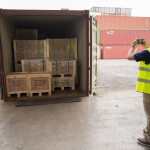06
Mar 2012
Tax Incentives to Logistics Industry
According to the China Federation of Logistics and Purchasing, logistics costs accounted for 18 percent of the country’s GDP in 2010.
China’s logistics infrastructure has improved significantly during the implementation of the country’s eleventh Five-Year Plan (2006-2010).
On June 8, 2011, Premier Wen Jia Bao announced that “we must make a complete set of policies and measures, and promote the healthy development of the logistics industry.” The resulting logistics improvement initiatives, known as the Eight State Regulations, put tax rationalization as a top priority and could bring welcome changes to the logistics industry:
– Tax preference;
– Land policy support;
– Road traffic improvement;
– Business environment improvement;
– Resource integration;
– Technology innovation and application;
– Government investment and bank credit support; and
– Logistics support for agriculture.
These initiatives should help logistics and transportation performance in at least seven major supply chain areas:
1. Domestic freight.
2. Marine freight.
3. Rail transport.
4. Road transport.
5. Air freight
6. Inland and short-sea shipping
7. Forwarding.
To boost its logistics industry, China is now allowing logistics enterprises to pay less urban land use tax (ULUT) on lands occupied by their commodity warehouses.
Tax is an important leverage to regulate the economy. The unbalanced business tax rates and repeated taxation in the industry are considered the main restraints on China’s logistics development.
According to the Circular on the ULUT Policy Concerning the Lands Occupied by Logistics Enterprises’ Commodity Warehousing Facilities land occupied by a logistics enterprise’s self-owned commodity warehousing facilities are subject to 50 percent of the ULUT.
Let’s consider logistics enterprises, commodity warehousing facilities, and lands occupied by warehousing facilities, as defined in the ULUT.
– Logistics enterprises are professional entities providing warehousing and distribution services for industrial/agricultural production, circulation, import, export and residential life.
– Commodity warehousing facilities shall cover a land area of over 6,000 square meters, and be used for the storage of agricultural products (such as cereals and cotton), agricultural production materials (fertilizers and pesticides), mineral products (coal and coke), industrial raw materials (timber and rubber), and manufactured goods (food and beverages).
– Lands occupied by commodity warehousing facilities refer to the area covered by both storage facilities and supporting facilities of logistics operations
While the actual ULUT rates are determined by provincial governments, Decree No. 483 stipulated the ranges of annual ULUT rates applied in different types of cities:
– Major cities: RMB1.5 – RMB30 per square meter
– Medium-sized cities: RMB1.2 – RMB24 per square meter
– Small-sized cities: RMB0.9 – RMB18 per square meter
– Counties, towns, industrial and mining areas: RMB0.6 – RMB12 per square meter
“The issuance of the guidelines showed the government’s determination to cure its ‘chronic disease’ in logistics, particularly how to handle problems concerning the high costs of logistics, such as road tolls, uneven business tax rates and repeated taxation issues,” He Liming, chairman of China Federation of Logistics and Purchasing
From China Briefing and Logistics in China: Thinking ahead
Interested in Tariffs? Click here: China Clarifies Tariff Implementation in 2012
– See more at: http://www.sbeintl.com/































